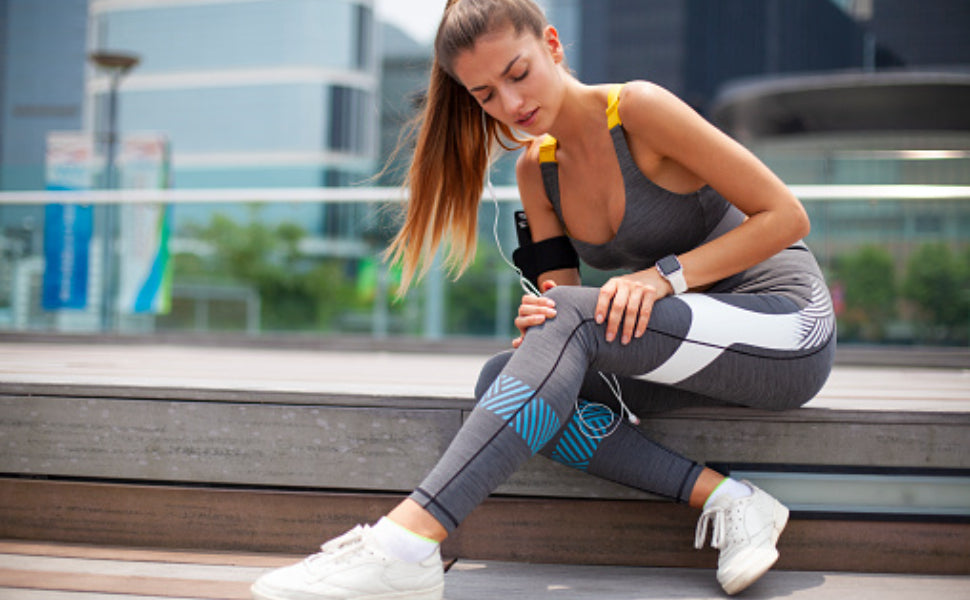How to Treat Sprained Knee

A sprained knee is a common injury resulting in discomfort, edema, and restricted movement. We will go over how to assess and diagnose a sprained knee in the fivalifitness blog post and different treatment options like the R.I.C.E method, medication, physical therapy, and knee braces.
fivalifitness.com
Evaluate and Diagnose
It's critical to assess the knee's appearance and sensation in order to diagnose and treat a sprained knee. Examining the knee for bruising, redness, or swelling may be necessary for this. In order to help treat your knee, a medical professional will assess how your knee feels and looks. They may even take an MRI or x-ray.
Examining the appearance and feel of the knee
During a knee examination, the medical professional will evaluate the knee's appearance and feel, taking note of any bruising, redness, or swelling. In addition, they will assess the patient's knee's range of motion and inquire about any pain or discomfort they may be feeling. The healthcare provider may employ specific instruments to assess joint stability and function, as well as manual manipulation of the knee to pinpoint tender or unstable areas. Appropriate treatment options are guided by this information to ensure the best possible recovery.
X-ray or MRI scanning
To determine the extent of the damage following a knee injury, your doctor might advise getting an X-ray or MRI scan. While an MRI uses strong magnetic fields and radio waves to produce detailed images of soft tissues like ligaments and cartilage, an X-ray uses low doses of radiation to produce images of bones. These scans are painless, non-invasive procedures that can assist your doctor in accurately diagnosing your knee injury and determining the best course of treatment.
Treatment Methods
The severity of the injury determines the course of treatment for a sprained knee. RICE (rest, ice, compression, and elevation) may be advised for mild to moderate sprains. This entails elevating the knee above the level of the heart, resting it, applying ice to reduce swelling, and applying compression with an elastic bandage knee brace.
- The R.I.C.E. protocol for a sprained knee: Take a nap, ice the injured area, utilize a bandage, compress Raise the leg in order to lessen swelling.
- Treatment with medication: In cases of severe knee sprain, prescription drugs such as muscle relaxants or opioids may be prescribed in addition to over-the-counter pain relievers like acetaminophen or ibuprofen.
- Exercises used in physical therapy and rehabilitation: Utilizes modalities such as heat or ultrasound in addition to exercises designed to increase range of motion, flexibility, and strength. Stretching, weightlifting, and balance training are a few types of rehabilitation exercises.
- Wearing knee braces: Wearing a knee brace after suffering a sprain can help stabilize and support the joint, lessen discomfort and swelling, and stop additional damage.
Preventing a Sprained Knee
The following are some strategies we can use to avoid knee sprains in our daily lives:
We ought to prioritize muscle training. Exercises that strengthen muscles by forcing them to contract against resistance can increase strength and endurance. It has many health advantages, including increased metabolism, decreased risk of chronic disease, and improved bone density. It can be performed with free weights, resistance bands, or bodyweight. For workouts to be safe and effective, proper form, gradual progression, and variety in exercise selection are crucial factors.
It's critical to get enough sleep in order to heal and avoid injuries. The body can restore energy reserves, heal damaged tissues, and lessen the chance of overuse injuries when it is rested. Any exercise program should include rest days in order to prevent overtraining or pushing oneself too hard or too quickly. Aside from adequate rest periods, proper nutrition and sleep are essential for maximizing physical performance.
It's critical to wear the right footwear and sports apparel to reduce the risk of injury and improve athletic performance. Wearing supportive, well-fitting shoes can help lower the chance of knee, ankle, and foot injuries when exercising. Sportswear with moisture-wicking materials and unrestricted movement can help control body temperature and minimize discomfort. It is crucial to wear clothes and shoes that are suitable for the task at hand.
One effective method of avoiding knee sprains when exercising is to wear quality knee pads. Supportive knee pads can shield the knee and aid in patella stabilization.
fivalifitness.com
Reference
Knee Sprain: Causes, Symptoms and Treatment
Treating Knee Sprains | Sports-health
First Plan of Action for Healing a Sprained Knee! - YouTube
Disclaimer
The information provided in articles written by Fivali is intended for educational and reference purposes only. The content on this website ( fivalifitness.com) is not intended to diagnose, treat, cure, or prevent any disease. We do not recommend self-diagnosis or self-treatment based on the information provided in our articles. Always consult a qualified healthcare professional if you have any concerns about your health or well-being.
If you are experiencing any symptoms or discomfort, we strongly encourage you to seek medical attention from a qualified healthcare professional. Only a licensed healthcare practitioner can provide an accurate diagnosis and appropriate treatment plan tailored to your individual needs.













